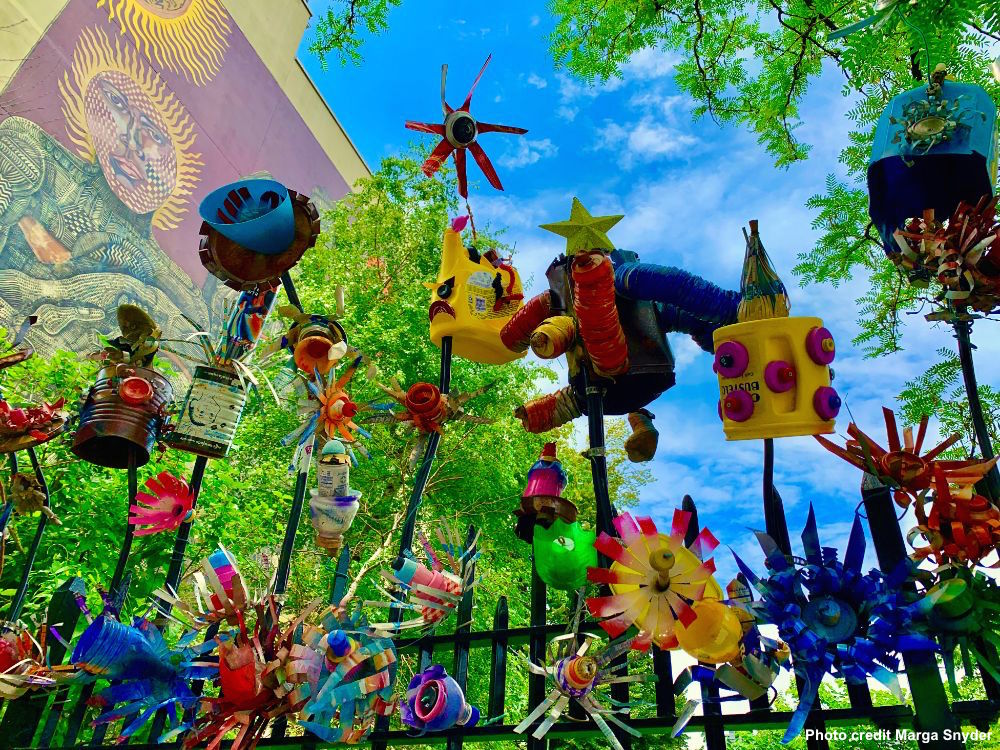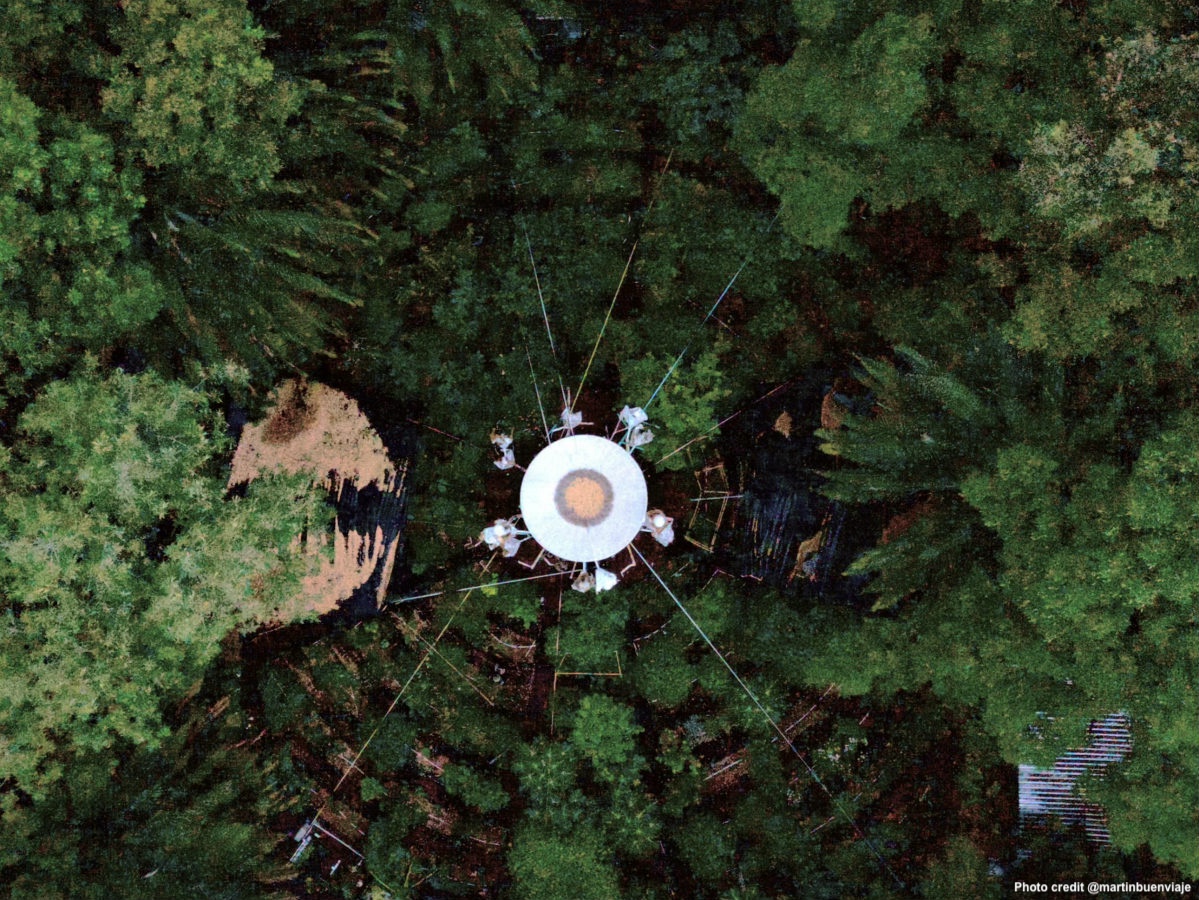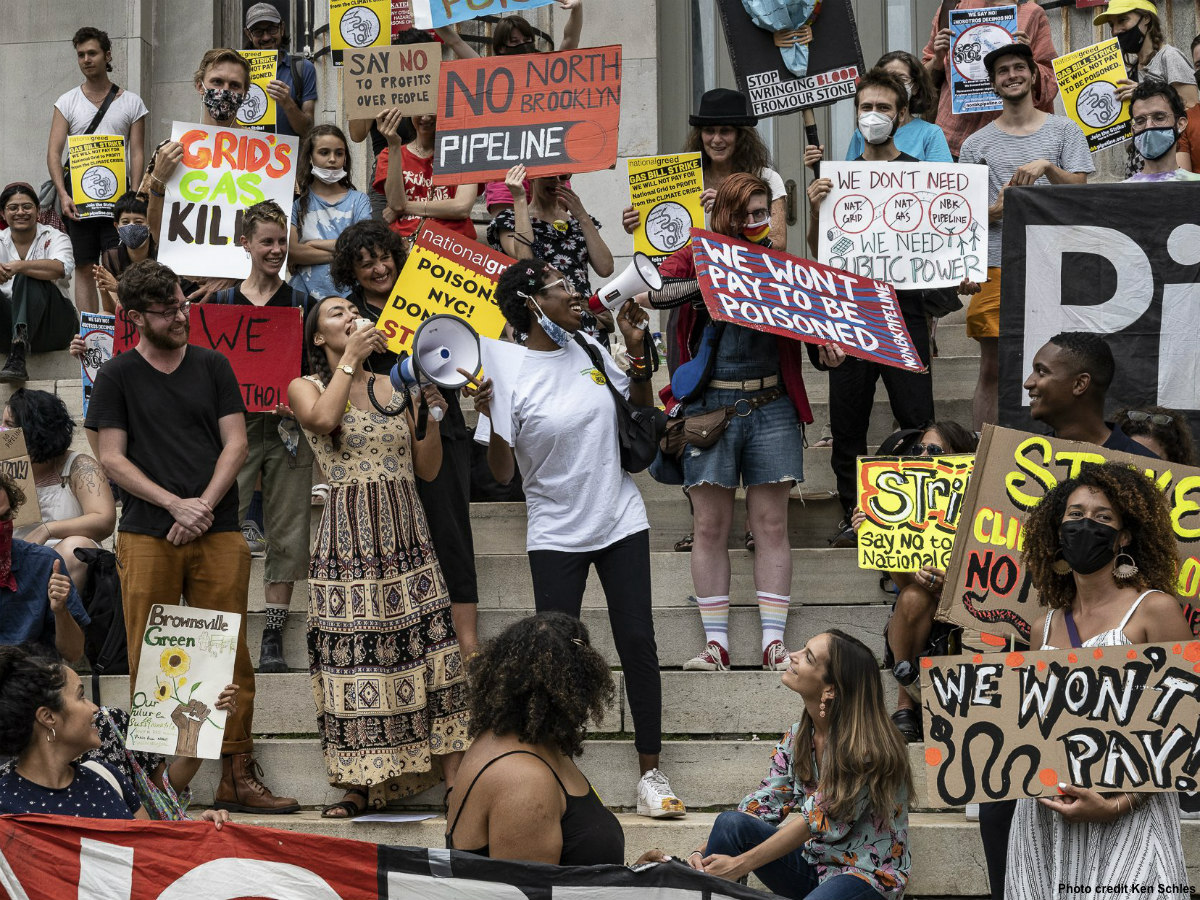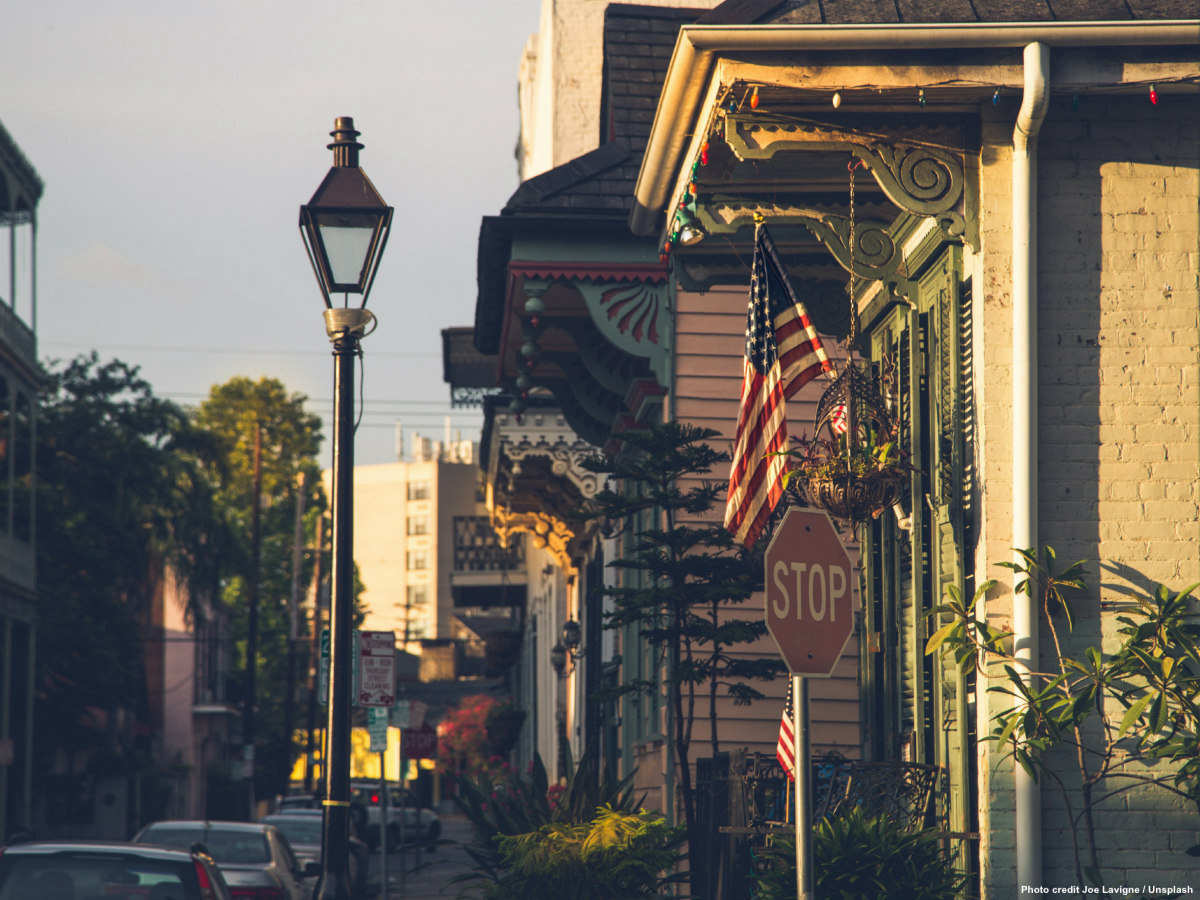Surprisingly the largest concentration of community gardens in the United States, and perhaps worldwide, can be found on the Lower East Side in New York City. How did a city so built up with concrete become a pillar of urban green oases? These pioneering community gardens not only offer a much needed respite within the brick and mortar landscape; they also offer refuge, advanced technology, and a wealth of information on how to live sustainably.
Additionally, they successfully demonstrate how working outside the bureaucratic system leads to more progressive initiatives later on, long before such advancements catch on as public policy. There is a reciprocal relationship of community garden volunteers caring for these spaces, with the gardens breathing life back into the public.
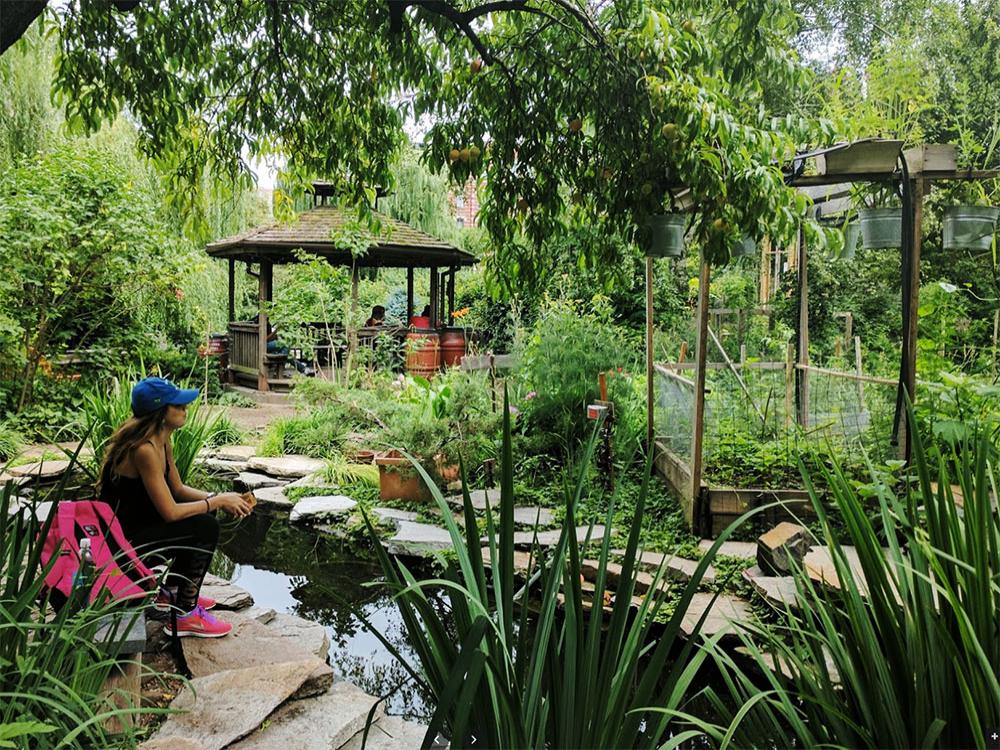
One garden in particular, La Plaza Cultural Armando Pérez Community Garden, captivates and nourishes those that spend time there in a myriad of ways. Situated at the corner of E. 9th St. and Ave. C. in the East Village, it is a unique open-air theater and green space, combining the functions of a community garden, a park, a play area, a sanctuary, wildlife refuge, and a performance venue. Community-wide activities aim to foster a sense of belonging and social equality for people from diverse cultures who visit this green space every year. A cultural and philosophical approach at the garden is used as a catalizator for environmental learning and awareness on sustainable practices.
Brimming with lush greenery, La Plaza Cultural hosts wondrous elements from corner to corner. The power of collaboration and initiative shine through in the works of a geodesic dome in collaboration with Buckminster Fuller; an amphitheater for gatherings and more designed by Gordon Matta Clark; stunning sculptural art by Rolando Politti created from recycled materials; and remnants of murals by Artmakers Inc., and Green Guerillas’ Liz Christy, who contributed the now-iconic “seed bombs” and planted trees during the Community Garden Movement in the 70s.
Any one of these dynamic features as a stand-alone are incredibly special; together, they orchestrate an experiential space where people can experience art, science, and culture as it lives and breathes in real time and space. In no uncertain terms, La Plaza Cultural is distinctly unique inside and out. There must be a reason that the garden gnome speaks for Noam Ghomsky.
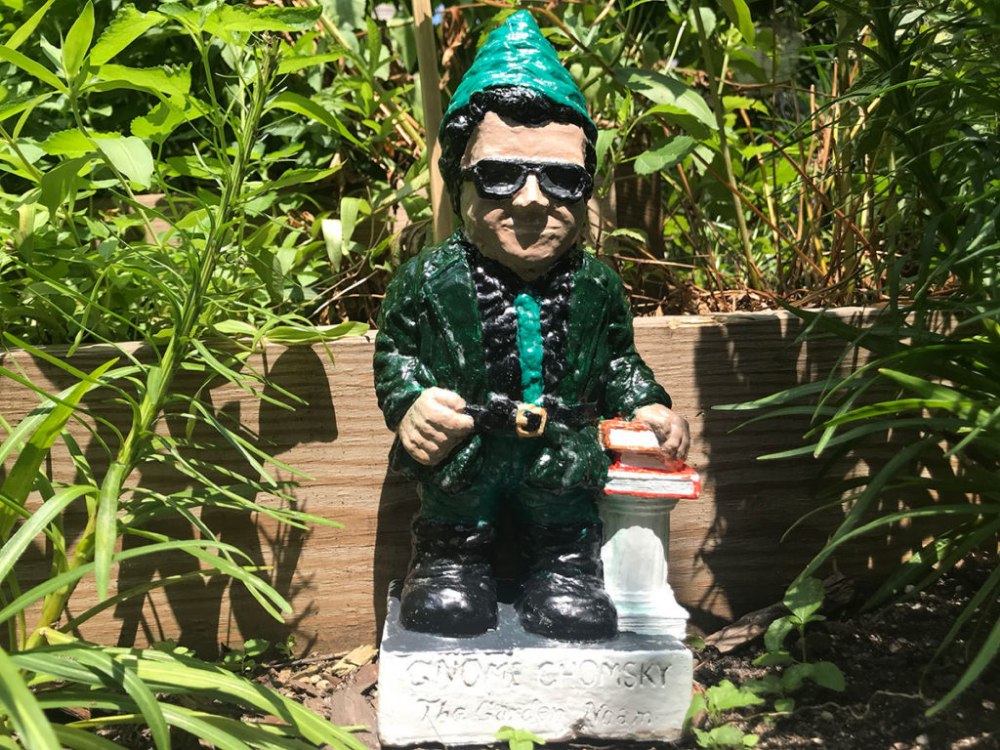
People can engage with everything from beekeeping; composting to planting vegetables, flowers, and fruit trees. Two long-time volunteers, Marga Snyder and Ross Martin, have been involved with La Plaza Cultural since the 1990’s, and shared how invested they are in cultivating and nurturing the garden. Both have been executive director in the past, but are happiest planting and cultivating the garden.
We are working together for the common good of the garden for the public, while we have found the perfect balance in both keeping the garden open and accessible to the public, yet still providing an intimate enough experience to appreciate the nuances within the garden, Snyder and Martin explain.
There are an array of workshops, events, and skillshare opportunities for people of all ages to seek out, both from the members of La Plaza Cultural and other experts and activists, focusing on the many sustainability efforts in place at the garden – rainwater collection barrels, natural pond filtration system with a solar-powered pump, beehive, greenhouse for early season seedling propagation, compost collection, and processing system, a bioswale to capture rainwater; and a permaculture and sustainability indoor/outdoor workshop space as well as adjustable photovoltaic solar array.
The latter is a unique, groundbreaking technology of tinseled fabric woven into the nylon, translucent fabric tent, which will be stretched over beams and will be completely operated independently from the city’s system, hooked to an inverter battery system with a battery built in.
Jackson Gilkey is project manager of the solar pavilion, and found a grant to fund it. Sarah Johnson is an engineer who also helped bring the solar pavilion to fruition, and is project manager on the construction of its foundation. The cement was poured by hand and the La Plaza Cultural volunteers dug most of the foundation by themselves.
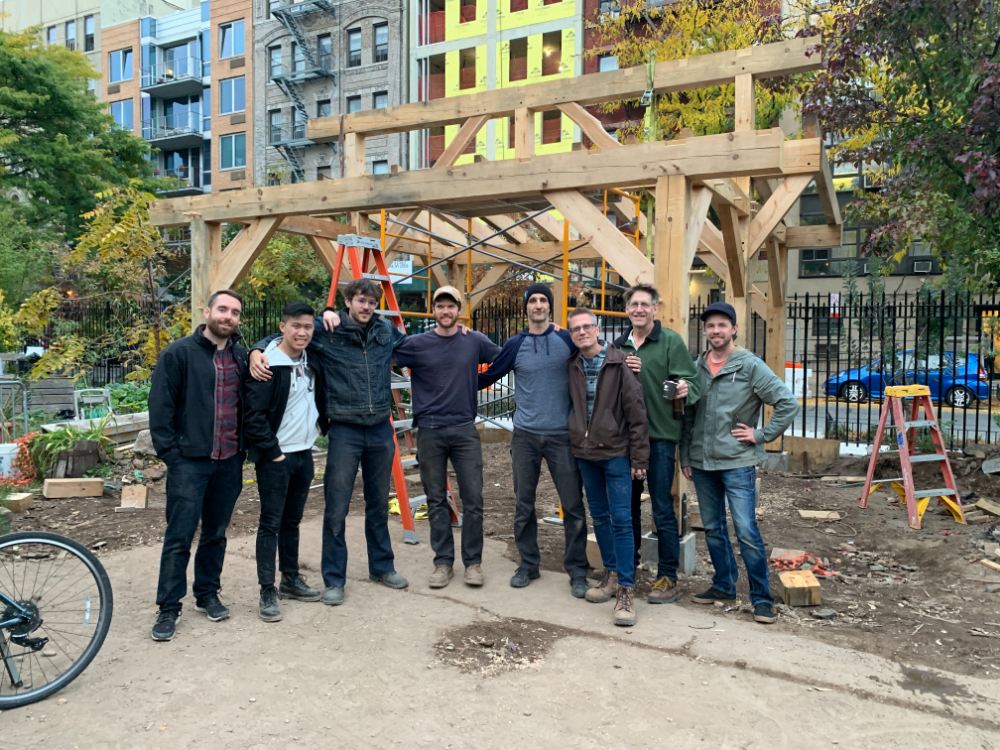
The solar pavilion’s back facade will have a green roof system with perennial food-producing plants. The structure is built from all sustainably grown timber that’s been milled and constructed by artisans from the Adirondacks by hand. It is held together with only wooden pegs and gravity, rather than machine-made fasteners.
A bioswale and French drain were dug to help filter particulates and pollutants to filter back into the ground and not in the river. This action led to the organization, Gardens Rising to raise $2 million to create bioswale throughout the neighborhood.
All of these actions demonstrate the in-depth knowledge from experts in the fields on how to live more sustainably and mindfully. While each community garden in New York City is distinctly unique, there is solidarity and support to protect one another from bureaucratic forces that can stand in the way of progress and stability. Much of this strength is due to the volunteers who contribute not only time and energy, but also the vitality of ideas, skill sets, expertise in a wide array of areas for the common good. There is a dire need to further utilize the wisdom of the community gardens.
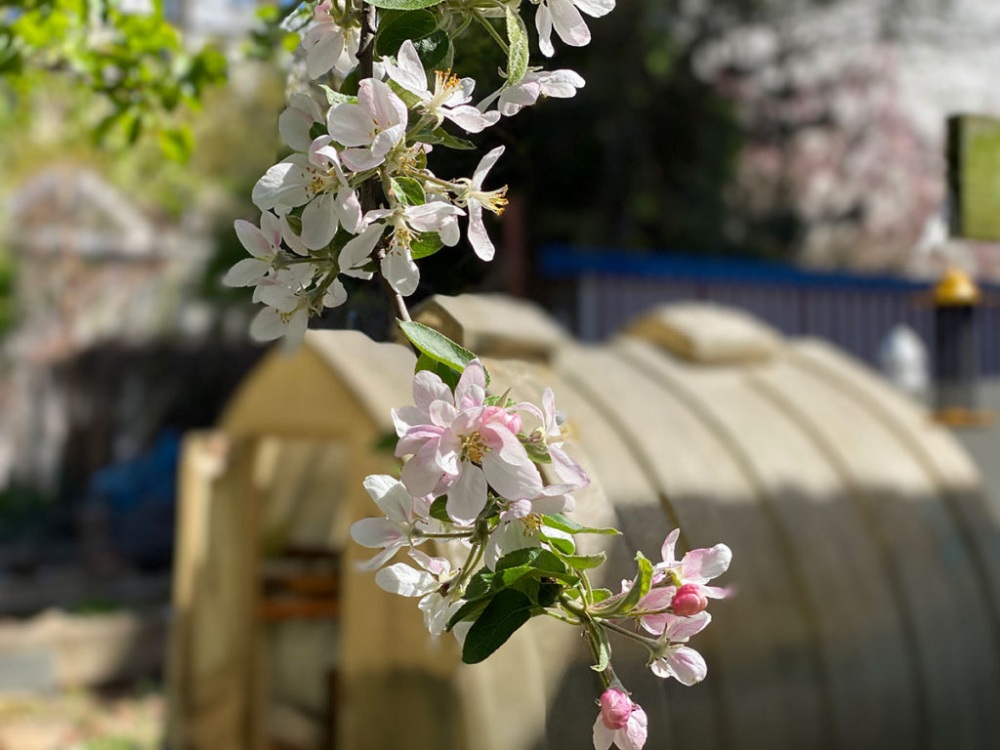
La Plaza Cultural embraces its roots, in all manners of the term. Founded in 1976 by members of CHARAS, local residents, and activists, these volunteers saw the need for green space amidst the chaos and crisis in the city at the time. People worked together to clear bulldozed areas and trash from the dilapidated buildings, stood up to police, defending and honoring the fundamental principles of building and working collaboratively toward a common goal: maintaining an utopic collective space to nurture.
The battle for the existence of community gardens in New York City has been fought for decades, as developers have tried to pry these valuable spaces away. This community of visionaries has stood together to protect these spaces. The organization LUNGS (Loisaida United Neighborhood Gardens) was formed to unify and advocate for the 52 community gardens on the Lower East Side in New York City in 2011. Many (but unfortunately not all) have survived. Snyder described how the gardens unify to support one another, another act of solidarity and wisdom amongst the garden community.
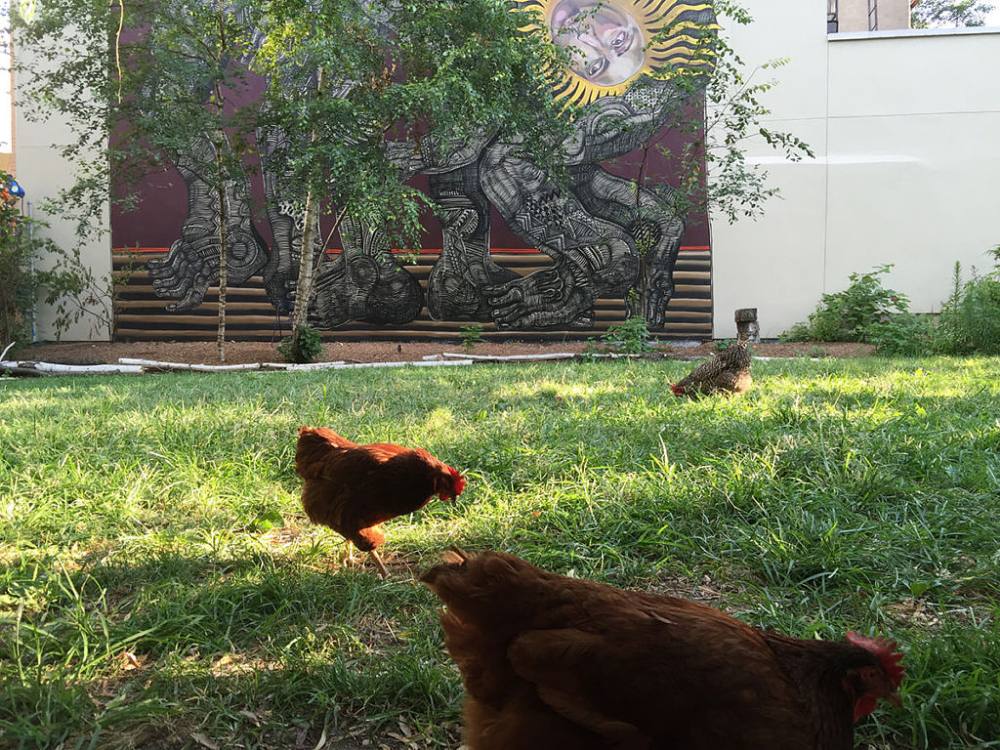
The work of these activists was essential, building hope where rubble once lay. This lifelong commitment to what they believed was needed in their neighborhoods sparked interest and over time led to more widespread initiatives like Green Thumb which allocate more public space in highly concentrated areas.
Overcoming devastation is something the city has dealt with on numerous occasions, and this included the gardens, which were damaged by hurricanes Irene and Sandy. They repaired the garden, combatted flooding, did soil testing, brought in new soil, and began to replant and start afresh in fostering community plant beds and plots. Former NYC Mayor Michael Bloomberg was particularly impressed with La Plaza Cultural, and they were able to save it when gardens were at risk of being seized or reallocated for development deals. During the pandemic, mass recognition of the need and appreciation for green space, and community gardens in particular, has grown exponentially.
When asked about notable events that took place at La Plaza Cultural over the years, Martin recalled the 9/11 memorial Shaker-style bench created by Willow Bill, while he spent a week building it in the garden, with a culminating ceremony.
This good energy continued when, two days later, the garden was notified that it was one of many that had been saved from the long legal battle against developers, and were finally given the freedom to cultivate the way they wanted. Martin notes that this was a truly special moment; a celebration of long holding true to their values coming to fruition with a sense of relief and stability.
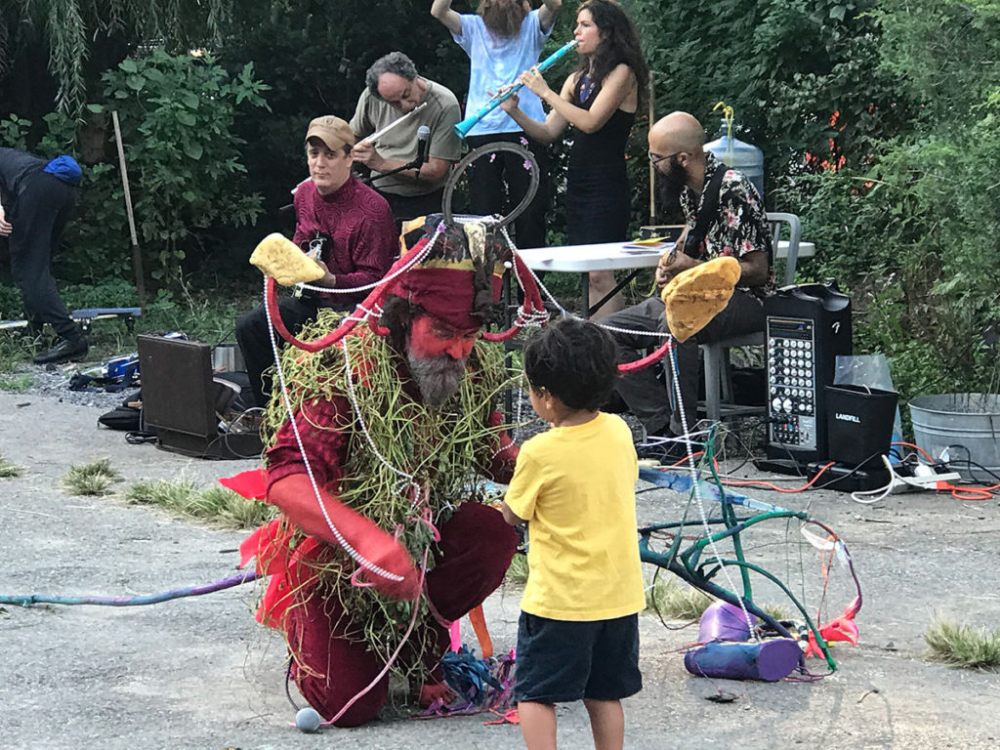
However, it is still important to be mindful, of insecurity elsewhere. While a lot of the gardens have been saved for the moment, not all have, and one shouldn’t grow complacent or shirk commitment to keeping them running. Dedication to these spaces must continue, through active practice, and in keeping funding going through events, workshops, merchandise and donations. La Plaza Cultural is in fundraising mode, and is currently working toward completing its groundbreaking solar pavilion.
As these community gardens sit in now-desirable areas in New York City, there is always the looming possibility of new battles, and maintaining the legacy and longevity is something that each generation must keep in mind. The struggle continues.
For more information, to donate, or to get involved, please check out La Plaza Cultural’s website.
